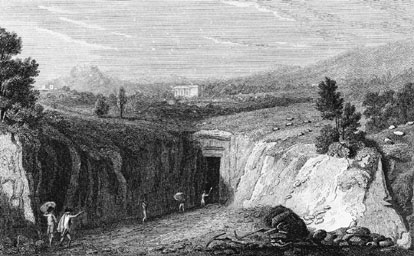

 | Page 617 |  |
many societies and institutions both scientific and social, for example, the International Union of Pre- and Protohistorical Sciences and the International Committee of Slavists, and he was a president of Archeologia Urbium.
Hensel has been one of the most productive Polish archaeologists of the postwar period, and has excavated in Poland (e.g., Czersk, Kruszwica, Poznan) and abroad (e.g., Algiers, Algeria; Styrmen, bulgaria; St. Jean-le-Froid, france; Cappacio Vecchia, and italy).
Herculaneum, like pompeii, was a Roman town in the Bay of Naples, destroyed by the eruption of Vesuvius in a.d. 79. The eruption followed a slightly different course at Herculaneum, where a final flow of volcanic mud buried the site much more deeply than Pompeii (over 20 meters deep in places). This has made excavation much more difficult but often more rewarding, since carbonized perishable material is much better preserved at Herculaneum.

Excavation leading to the remains of Herculaneum
(Ann Ronan Picture Library)
The site was discovered during the digging of a well in 1709. But lime burners seeking marble for their kilns displayed more interest in the find than did archaeologists, and systematic excavations only began in 1738, at the command of the Bourbon king Charles III. The theater and basilica were discovered in these early excavations, which were made by tunneling. The most sensational find came in 1750 in the form of the Villa of the Papyri (upon whose design the j. paul getty museum in Malibu, California, is based). The villa was packed with bronze sculptures, including a number of portraits of philosophers. Even more remarkable were the hundreds of papyrus scrolls, found carbonized but largely legible. They are mainly works by the Epicurean philosopher Philodemos. The villa may originally have been owned by the father-in-law of Julius Caesar, L. Calpurnius Piso, a patron of Philodemos.
Karl Weber might be considered the first semiprofessional archaeologist to work on the buried Roman cities around Vesuvius. A Swiss military engineer who had enlisted as a mercenary in Naples in 1743, he was in charge of the excavations at Herculaneum (as well as Pompeii and Stabiae) between 1750 and 1764. He oversaw the excavation of the Villa of the Papyri and produced detailed and accurate plans and other documentation. In this period of treasure hunting
 |  |